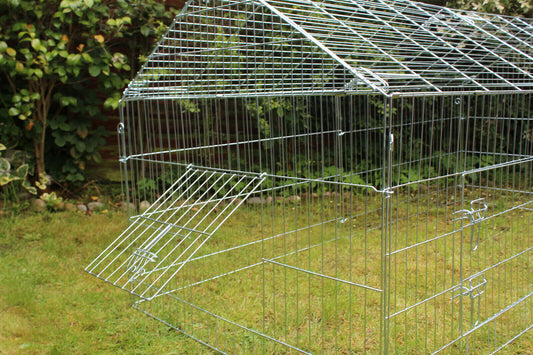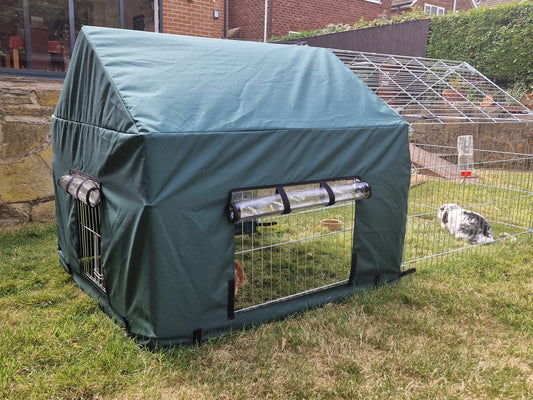Introducing Your Cat to New Pets
Cats are naturally solitary creatures who, as lone hunters, are very capable of looking after themselves. They do not need the company of other animals but many owners find it hard to stop at just one cat. Others may even wish to add a dog into the family mix.
Cats are able to live happily with other pets if their owners understand their needs and do not rush the process. Follow our guide to cat introductions so you can enjoy harmony in the home.
Adding a Second Cat
If you have a single cat, they will have been living a solitary existence mimicking their wild ancestors. As territorial creatures, they know the boundaries of their land and may be used to guarding it and chasing away feline intruders.
If you want to add a second cat to your home, your first cat will need to learn that they are welcome and that they do not pose a threat to your original cat’s resources. Each cat will need their own space in the home, as well as their own water and food bowls and litter trays. When cats are forced to share these resources, conflict inevitably arises.
If cats have enough space, do not have to compete for resources and see each other as belonging to the same social group, they can live well together. You will be able to tell if your cats are in the same social group if they sleep together or spend time grooming each other.
Introductions
The important thing when introducing two cats to each other is to take things very slowly. Any forced or rushed interactions, or scuffles over resources, are likely to leave the cats with negative associations. You need all of your cats’ interactions to be positive so they are happy to accept each other as housemates.
Cats Protection has the following advice:
- Set up a sanctuary room – perhaps in a spare bedroom – that has everything in it that your new cat will need. This way they have their own space and they can hide there in safety until they feel ready to explore the rest of the home.
- It is a good idea to get your two cats used to each other’s scents and you can do this by ‘scent swapping’. Use a cloth to wipe around the first cat’s cheeks and forehead before leaving it on the floor in the second cat’s room. Repeat the process with the other cat.
- The next step would be to allow your cats to see each other but not be able to get to one another, therefore avoiding any potential fighting. Glass screens or doors are useful here.
- You can then move to a mesh or gate barrier where your cats can see and smell each other but still not get to each other. Be led by your cats and let them choose to approach each other rather than forcing them.
- If all goes well to this point you are then ready for a face-to-face meeting. Make sure that your cats know that they can get away to a safe place if they need to. Keep these first meetings short and positive with lots of treats or toys.
Adding a Dog
Despite the well-known phrase ‘fighting like cat and dog’, there are a great many cats and dogs living in perfect harmony with each other. In fact, cats will sometimes get along better with a different species as they will not be viewed as being such a threat to their resources.
It is very important that you don’t just let your cat and dog ‘get on with it’ as this could end up with disastrous results. Instead, meetings need to be carefully managed and the whole process needs to be as gradual as possible. It is much easier to manage introductions from the start than to try mending a broken relationship after a rocky beginning!
Introductions
Your cat will need to have access to a room that the dog is never allowed in so that they have somewhere they can feel safe and retreat to if the canine attention gets a bit much. Ensure that your cat has all the resources they need in here, as well as some places to hide and high vantage points.
Cats Protection has the following advice:
- Try ‘scent swapping’ between your cat and dog by wiping them with cloths and leaving them for the other to sniff. This will get them used to each other’s scents before they meet face-to-face.
- Keep your dog on a lead at first so that they cannot lunge at the cat. It might help to schedule the meeting for after a dog walk so that your dog is less lively.
- Never force your cat to approach your dog and let your cat escape to another room if they need to.
- Never allow your dog to chase your cat. Reward your dog for calm greetings.
- Give your cat treats for any positive interactions so they begin to associate the dog with good things happening.
- When your cat and dog are no longer concerned by each other’s presence, you can let your dog off-lead. Make sure your cat can still escape or jump up out of the way if they need to.
- Keep your cat’s food bowl and litter tray out of reach of your dog – they find the contents particularly delicious but it is not good for them (and your cat won’t be happy about it either!)
Happy Homes
Once your cat is happily interacting with their new housemate – whatever their species might be – you might be tempted to think that’s happily ever after. However, you should keep a close eye on your pets – particularly their body language – so you can pick up on any signs that things are not going so well. Reward positive interactions and if you spot signs of aggression, split your pets up immediately and give them some time apart. It can take three or four weeks for pets to accept each other so don’t try to rush the process. Given time and space, they’re sure to become the best of friends – or at least happily keep out of each other’s way!
If you enjoyed this article, have a look at:
Introducing a New Kitten to an Adult Cat









